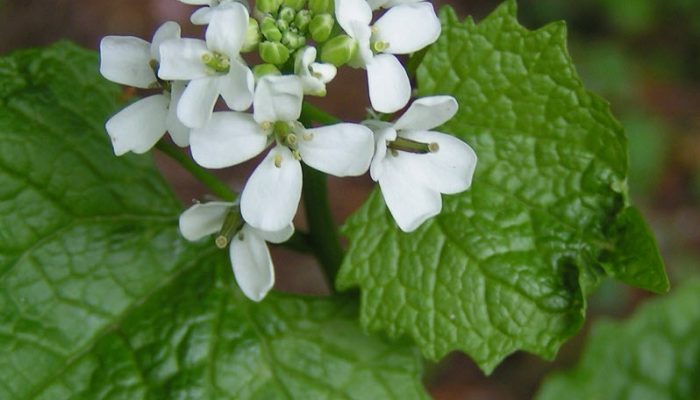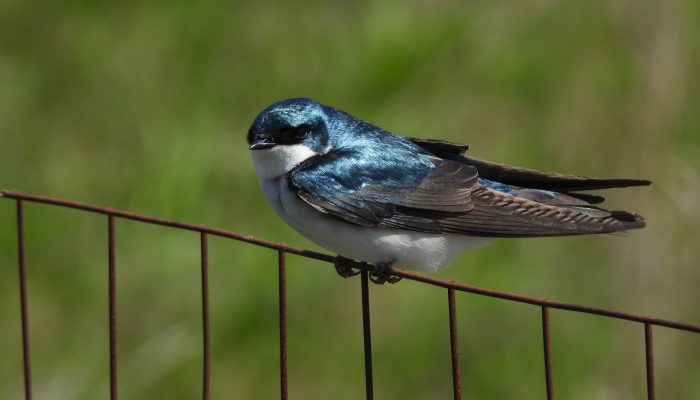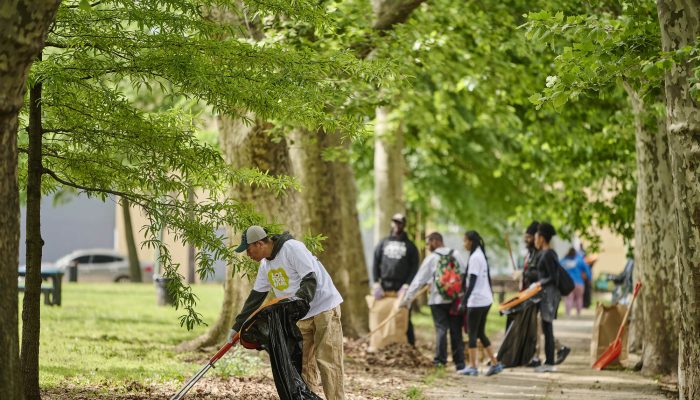By Trish Fries, Environmental Education Program Specialist, Wissahickon Environmental Center
Garlic mustard (Alliaria petiolata) is a common plant seen all over the forest floor in Philadelphia’s watershed parks. A native of Europe and Asia, it was introduced into this country for medicinal use and as an edible herb. Love it for its flavor, or hate it for its invasive nature, it can be a tasty springtime treat. We often let our young visitors take a sniff or a nibble off the plants along the trail. Most children make a face upon tasting its garlicky flavor, and depending on the season it can have a mild or strong flavor. (Note: It is illegal, and potentially hazardous to your health, to harvest or eat plants in our parks.) Our favorite use of garlic mustard is to make it into pesto. In the spring, we pull it, clean the leaves, chop them, and mix with olive oil, Parmesan cheese, and nuts. The result is a delicious garlic mustard pesto.
Garlic mustard is a biennial plant. It has scalloped-shaped leaves that stay close to the ground its first year. In its second year, the adult form has tall stalks with small white flowers in May and June. Being a member of the mustard family, it has many small seeds which mature in August. The seeds even taste like garlic. All parts of the plant are edible and nutritious and contain vitamins A, C, and many trace minerals.
As with many plants found in our parks, there are historical accounts of the plant used for medicines. These range from treating bronchitis to gangrene. More relevant to our casual use in the woods is by making a poultice to relieve the itching of bug bites. Try crushing a leaf and rubbing it on your bite.
In the late 1800s, the plant escaped into the wild and has since become a threat to our native wildflower populations. The overabundance of garlic mustard is due to several survival mechanisms:
- It produces a large number of seeds (hundreds per plant).
- It has high tannin levels that deter deer from eating it.
- It is allelopathic, meaning it releases chemicals that hinder the growth of other plants nearby.
While it is against Parks & Rec rules to remove any plant from the park, you can join us at the Wissahickon Environmental Center on Saturday, May 18 at 10 a.m. for a special Love your Park Week event. Learn more about the plant and help us remove some garlic mustard. Then stick around to enjoy its flavor in dishes that we prepare, such as pesto, vinegar, and as an addition to salad. Registration is required for this event.




